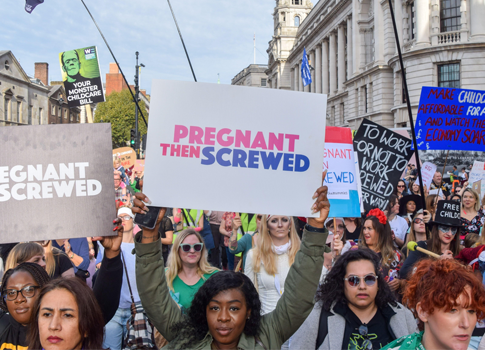The attention span debate
Over the past few years, there’s been no shortage of concerned coverage purporting that adult attention spans are on the decline. A survey of the UK public by the Policy Institute and Centre for Attention Studies found that around half (49%) of the public feel their attention span is shorter, whilst two-thirds (66%) believe that young people’s attention spans are worse than previous generations’. These worries often centre around the consumption of short-form video content, such as TikTok and Meta’s competitor Reels, and the risk of developing so-called “Popcorn Brain”. Whilst headlines may be anxiety-inducing, the bigger picture is more nuanced. Just because individuals report that their own attention spans are getting shorter, this self-assessment is not necessarily accurate. The same survey quoted above found that 50% of Britons believe the average adult attention span is just eight seconds – “worse than that of a goldfish” – despite this claim having been debunked.
The role of cinema
Cinema further complicates discussions of attention span. 2023 has proven that long runtimes don’t necessarily deter audiences, even if short-form content continues to take up an increasingly large portion of daily video-viewing. At this year’s 96th Academy Awards, of the ten Best Picture nominees, six clocked in at over two hours – with Christopher Nolan’s Best Picture winner, Oppenheimer, reaching the three-hour mark. These films are not just receiving critical acclaim but pulling in audiences too: Oppenheimer (3 hours) is the UK’s third-highest grossing film of 2023. Meanwhile, fellow Best Picture nominee, Martin Scorsese’s Killers of the Flower Moon (3 hours and 26 minutes) – although less commercially successful – still received a full, global theatrical release. In addition, James Cameron’s 2022 Avatar: The Way of the Water dominated the box office for the entirety of January 2023, at 3 hours and 12 minutes. These marathon productions can be seen as the culmination of a broader trend in cinema: analysis by The Economist, with a sample size of over 100,000 feature films, found that the average length of a film has increased by 32% internationally, from the 1930s to 2022.
A similar phenomenon can also be seen in cinema advertising. In 2023, brands have looked to emulate Scorsese and take advantage of cinema’s unparalleled audience engage to showcase longer creative. Of Campaign’s “Top 15 Film Ads of 2023”, six extend beyond the tradition 60” format, in favour of lengths of up to 3 minutes 40 seconds. Other notable examples, include Beavertown Breweries 3 minute Halloween-themed advert, which played around horror blockbusters, or Estrella’s 6 minute and 30 seconds short film, featuring Spanish pop star Bad Gyal.
Advertising in the attention economy
The topic of attention and the “attention economy” has become increasingly prevalent in the advertising industries over the past few years. Brands, agencies and media owners are now more than ever seeking to compare the value of advertising across different channels and formats – not only in terms of impressions, but genuine interest and attention. Research by DCM and Lumen has shown that cinema is the “attention leader” of advertising formats, achieving both high levels of viewership and holding viewer’s attention for longer periods of time. On these metrics, cinema far surpasses formats including 30 second TV spots, non-Skippable YouTube adverts, and both Facebook and Instagram in-feed adverts. Most interestingly, this study found that long-form adverts are no less effective than their shorter counterparts. Time spent engaging with a cinema advert does not significantly decrease depending on ad length, with adverts over 30 seconds achieving a similar proportion of time being watched in comparison to those under 30 seconds.
The power of cinema advertising
Cinemas create a near-perfect environment for viewing ads, with 96% of onscreen ad impressions being viewed. Film screenings house an audience who are relaxed, engaged, and free from distraction. In the dark and without their phones (50% of Briton say they sometimes can’t stop checking their smartphones when they should be focusing) viewers are inevitably drawn to the big screen. As the adverts of 2023 have showed us, cinema is the ideal canvas for emotional and risk-taking creative, driving deep engagement with the brand and message.






